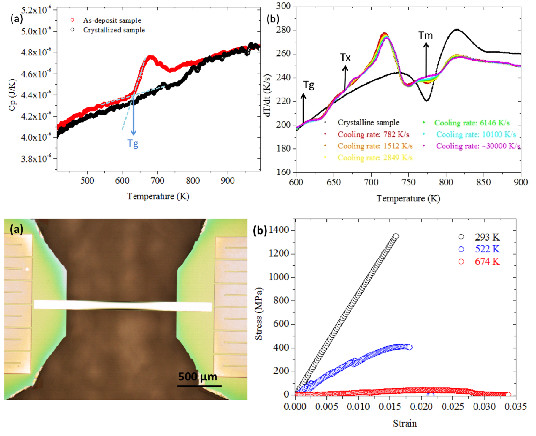Ultra-Stable Metallic Glasses
New in-situ method to study the thermal and mechanical behavior of metallic glasses

A Harvard MRSEC team led by Joost Vlassak and Frans Spaepen with Jans Schroers (Yale) developed an in-situ method to study the thermal and mechanical properties of a broad range of metallic glass compositions. The (top left) figure shows the heat capacity of a Pd49.5Ni14.1Cu25.3P11.1 sample. Their technique makes it possible to analyze the effects of sample processing and the glass transition (Tg), crystallization (Tx), and melting (Tm) temperatures can be identified from a single temperature scan (top right). The ultra-fast heating on the nanocalorimeter sensor results in a much larger endothermic peak so the glass transition temperature can be more accurately determined. The thermo-mechanical behavior of amorphous Pd-Ni-Cu-P thin films was evaluated over a broad range of temperatures using the in-situ micro-tensile tester (bottom left) and found a dramatic decrease in flow stress of the glass thin film above the glass transition (bottom right). Their technique demonstrates an effective way to identify new, ultra-stable metallic glass composite materials.
�
David A. Weitz (Physics and Applied Physics)
Harvard MRSEC (DMR-1420570)
